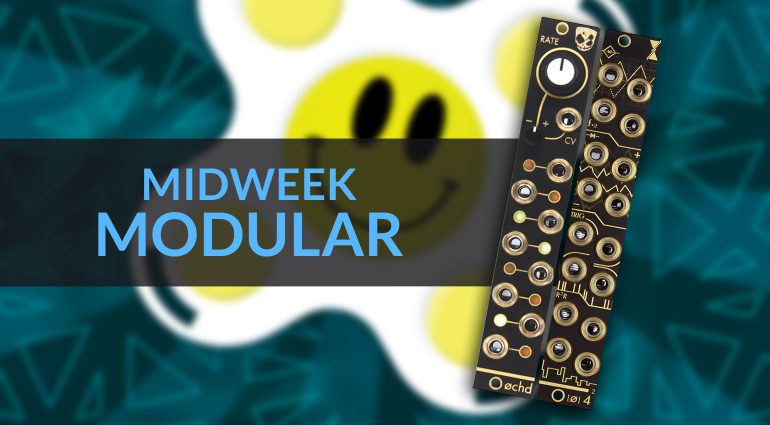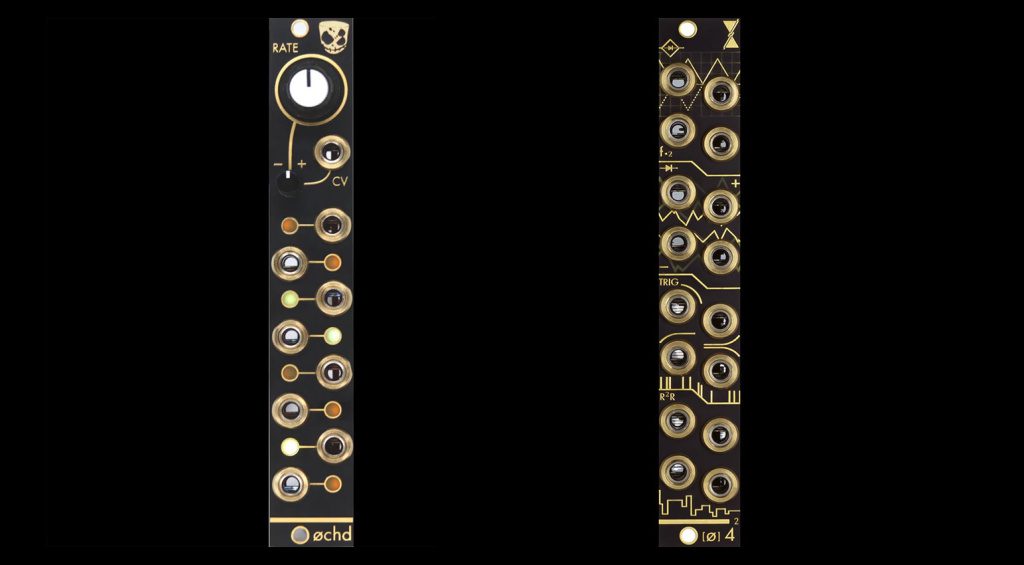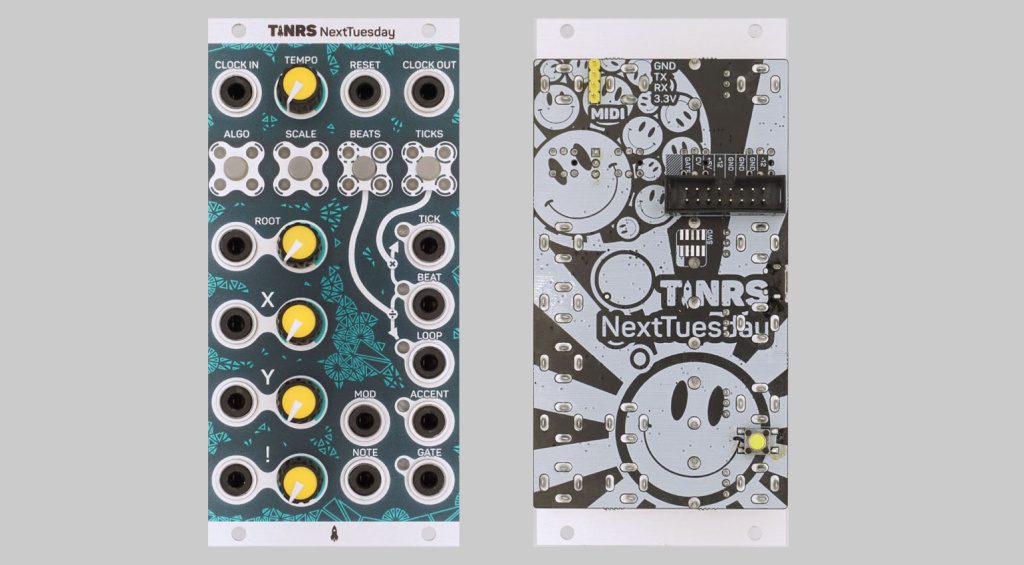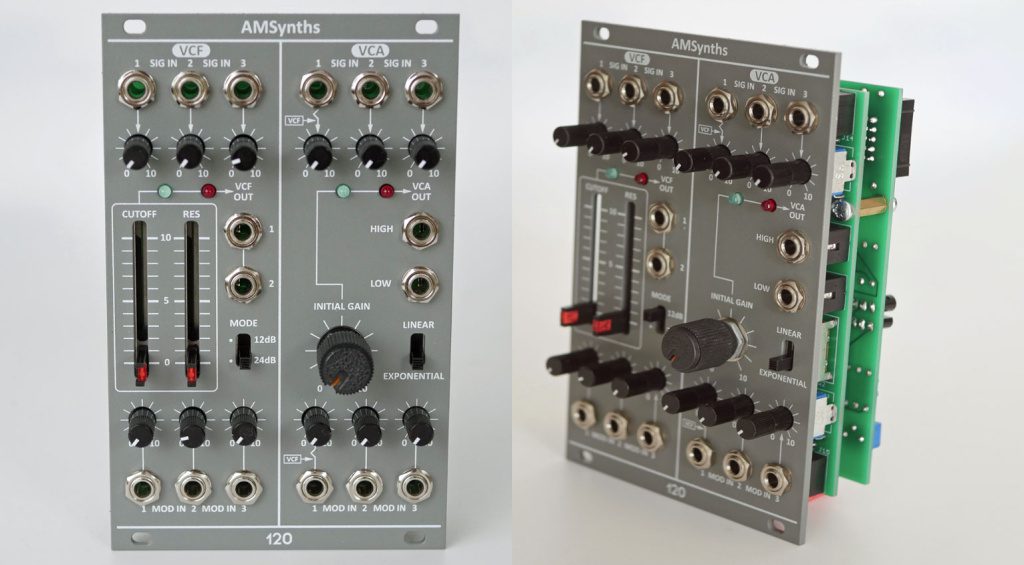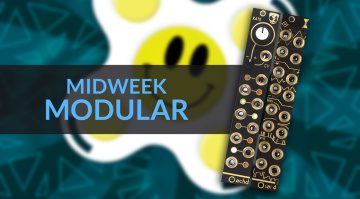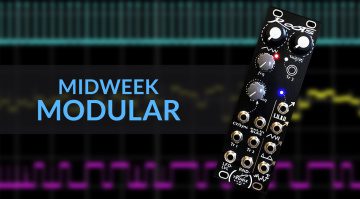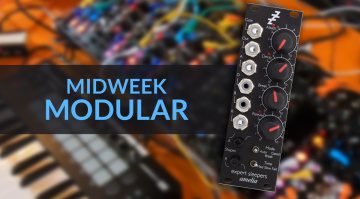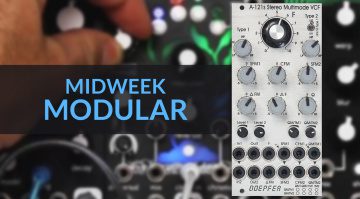Midweek Modular: øchd expanders, NextTuesday melodies and a Roland 120
DivKid massively expands the Ochd LFO, This is Not Rocket Science takes us to NextTuesday and AMSynths recreates an unreleased System 100m module.
Midweek Modular
In the spooky night of the modular undead, here are the tricks and treats of the past week.
DivKid øchd expander
In collaboration with Instruo Modular, Ben “DivKid” Wilson has conjured up an expander for the popular øchd LFO module. The Ochd features 8 LFOs, spread from slow to fast and controlled via a single rate knob. The frequencies are somewhat related, but only by ear, which gives them a very organic quality.
The expander builds quite massively on these humble LFOs by adding another 16 outputs in a 4HP module. The outputs are split into 4 groups of 4 and are all tied into the original LFOs in interesting ways.
The top 4 are rectified versions of LFOs 1, 3, 5 and 7. This effectively gives unipolar versions at twice the speed of the original but folds the negative portion up into the positive. The next 4 use logic to pull outcomes from LFOs 2 & 3 or 6 & 7, creating some very curious shapes. The third group of 4 produces triggers from an LFO’s rising edge. The first output uses LFO 2, the next 2 & 4, then 2, 4 & 6 and finally 2, 4, 6 and 8. The last 4 use digital-to-analogue converters to generate random-stepped voltage, or “slow noise”, based on various LFOs.
Instruo and DivKid have pulled a huge amount of extra functionality out of the humble ochd. The relationship between them means that any modulation you use from the LFOs will affect the other outcomes. It nicely emphasises the organic nature of the module and pushes you into different happenings. Divkid has a full video on it below.
TiNRS NextTuesday
Back from the death of component shortages and other challenges, a new version of the This is Not Rocket Science Tuesday procedural sequencer has emerged. It’s brilliantly called NextTuesday and is the sort of module that can’t help but make you look good and your modular sound fabulous.
The idea is that NextTuesday uses mathematical algorithms to generate melodies from your input and a bunch of modulatable settings. The X and Y knobs are your entry into the workings of each algorithm. They change the dimensions of the output, from modulating octaves, rearranging notes, pushing the relative distances to affecting the probability of things happening in this vast mathematical space.
One new feature of NextTuesday is that you can put in a root note that the generated melodies form themselves around. This could do wonders for your musical progressions. You can also apply a scale, define the length of a loop and dictate the beats and ticks.
The only problem is that NextTuesday tends to be better at writing melodies and basslines than you could ever hope to be. I, for one, welcome our new algorithm overlords. Video below.
AMSynths AM8120
A curious replica of a Roland 100m module that was never actually produced. Apparently, Roland made a prototype 120 module that featured a combined VCF and VCA. AMSynths is showing us what this module could have been. The assumption is that the filter would have been the same as used in the 121 dual VCF, and so AMSynths has decided to change it to a filter based on the Jupiter-8 lowpass design to give the two modules a bit of difference.
The filter has three inputs and two outputs and is also normalled to the first input on the VCA. Each input has a useful attenuator for mixing your sources. There are also three attenuated modulation inputs; the first two control the cutoff, and the last one goes to the resonance. Cutoff and Resonance controls are on those familiar Roland-style sliders.
The VCA also has three inputs with mixing controls, individual CV inputs and a single gain control. It has a switch for linear or exponential response.
The AM8120 is a useful combination of parts in a single module that fits perfectly with AMSynths other System 100m modules.
Videos
You are currently viewing a placeholder content from YouTube. To access the actual content, click the button below. Please note that doing so will share data with third-party providers.
You are currently viewing a placeholder content from YouTube. To access the actual content, click the button below. Please note that doing so will share data with third-party providers.

 2,8 / 5,0 |
2,8 / 5,0 | 